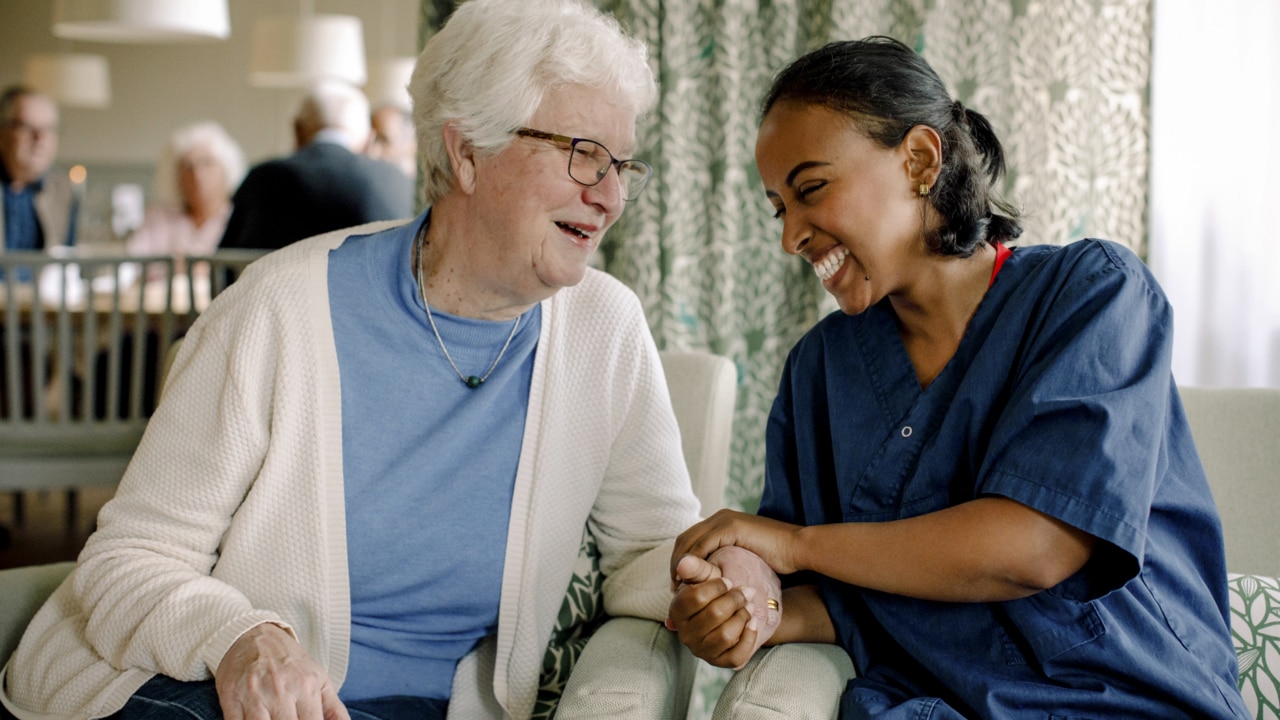Aged care funding under the microscope from new taskforce
An aged care taskforce is expected to examine industry calls for wealthier older Australians to pay more of the cost of their nursing home care.

A new Aged Care Taskforce formed to review funding in the sector is expected to examine industry calls for wealthier older Australians to pay more of the cost of their nursing home care.
With aged-care costs projected to rise to almost $40bn by 2026-27 from the current $32.7bn, the taskforce, first flagged in Tuesday’s federal budget, will look at the sustainability of care funding for about 1.5 million older Australians.
The budget documents reveal the Albanese government will spend more on in-home care support and less on residential care in coming years, which “reflects the increasing preference of older Australians to remain in their own homes”.
The shift, confirmed by a reduction in funding of aged-care places from 78 per 1000 people aged over 70 to 60.1, “is expected to decrease payments by $2.2bn over three years from 2024-25”, budget figures show.
The change in residential care funding mirrors market realities as fewer people seek a nursing home place. The funds no longer going to nursing home packages will be redirected to other healthcare and aged-care initiatives, including more in-home care for the elderly.
The government announced a further 9500 home-care packages in the budget, which give older people help around the home with cleaning and other domestic support.
It will take the total number of home-care packages to around 285,000 by mid-next year.
But residential aged care is still the biggest expense item in federal government aged-care spending, accounting for about $6 of every $10 spent.
The budget included $11.3bn in new funding to pay for a 15 per cent wage increase for more than 250,000 nurses and workers in the sector.

Given the number of 85+ Australians is projected to grow from 543,000 to 806,000 in a decade, the new task force will be focused on the establishing the sustainability of future spending in the broader budget context.
A statement from Health and Aged Care Minister Mark Butler and Aged Care Minister Anika Wells said the new taskforce would “review aged-care funding arrangements … to make the system fair and equitable, placing older people at the centre of aged care.”
Part of that discussion is expected to focus on greater co-contributions from residents in nursing homes, based on their capacity to pay.
With aged-care providers under extreme financial pressure – more than 70 per cent are y operating at a loss – there is a growing view residents should contribute more to the non-direct care component of aged care.
This would include a greater personal financial contribution to food, cleaning and other household services.
Proposals include deregulating the basic daily fee a nursing home can charge residents to allow self-funded retirees to meet the actual costs of providing those services, floated by large provider Catholic Health Australia.
CHA also says the personal and nursing care component could be made more equitable if the means test for eligibility included the full value of the family home rather than the current upper limit of just over $186,000.
Peak provider advocacy group Aged & Community Care Providers Association said the creation of a new aged-care funding taskforce was “welcome” given the dire financial situation the sector finds itself in.
“(We have) been calling for some time for a national conversation about the sustainability of the sector, ensuring we have the funding we need to provide quality aged-care services,” ACCPA chief executive Tom Symondson said. “This includes the potential for consumer contributions from those who can afford to pay more.”
Aged-care provider Ryman Healthcare Australia chief executive Cameron Holland said there was “no path out of Australia’s aged-care crisis that doesn’t involve some kind of consumer co-contribution model.”
“While direct aged-care services should always be publicly funded, the accommodation and daily service costs the government currently pays for on top of that need to be deregulated,” Mr Holland said.







To join the conversation, please log in. Don't have an account? Register
Join the conversation, you are commenting as Logout